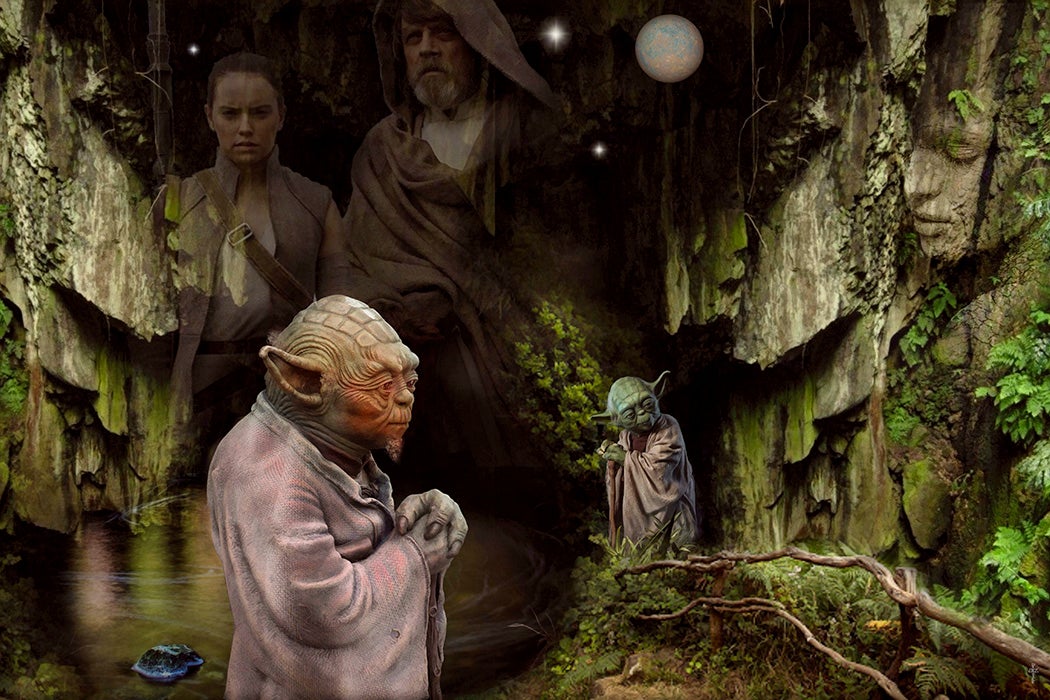Star Wars creator George Lucas has often credited Asian influences on the decades-long franchise, particularly Japanese filmmaker and painter Akira Kurosawa’s 1958 film The Hidden Fortress.
As film scholar Kevin J. Wetmore Jr. pointed out in 2000, Lucas also borrows from Asian philosophy and religion for the films’ noted spirituality. “The theology and cosmology of Star Wars construct an ultimate reality much closer to Taoism than to any Western religious philosophy,” he writes.
“The Force” in Star Wars is similar to the concept of Tao, as all things are connected to the Force, like they are with the Tao. Unlike the concept of yin and yang in Tao, in which not all dark parts of our world are bad, Star Wars has a more straightforward good (light) versus evil (dark) binary.
The films’ good guys seem centered squarely within Taoism—Yoda could be seen as a Taoist master—so Lucas did create a world where the East is good and, by implication, the West is bad. The rebels’ mission to fight back against the Empire could also be viewed as an anticolonial narrative. However, as Wetmore observes, choices that Lucas makes for his characters—and who plays them—stop Star Wars from making any actual radical statement.
Many of the rebels have names that incorporate Eastern terms or are stylized into languages that sound Asian. “Han” in Han Solo, for example, is a dominant ethnic group in China. Wetmore writes that “Obi-Wan Kenobi suggests Japanese.” In contrast, a villain like Darth Vader is close to the Dutch spelling of Dark Father, signaling that Western culture is part of the Dark Side and the colonizing group.
Despite the Asian influence, though, many actors who play rebels are of European descent, like Harrison Ford and Ewan McGregor. Lucas “appropriates Asian culture and philosophy and then represents it on the screen with Western actors,” Wetmore writes.
Despite these influences, Lucas himself cast almost no actors of Asian descent in the Star Wars franchise. And some characters’ makeup makes their features seem Asian, through makeup and other visual effects. This is particularly true of the villains in the 1990s Star Wars prequels, despite the obvious touchstones from Asian cultures in the series.
Weekly Newsletter
One of these characters is Darth Maul, who attempts to abduct Queen Padmé Amidala in Star Wars: Episode 1—The Phantom Menace. Although Lucas said in an interview that Darth Maul’s appearance and actions were inspired by “representations of evil,” Wetmore argues that the character “seems to be much closer to the stylized makeup of Asian theatre.” Darth Maul’s “movement and action seem to have more in common [with] the Beijing opera characters than with the Western devil.”
Wetmore concludes that the release of the prequels was not just a return of the Star Wars films, but a reminder of the “Orientalism of half a century ago which, upon inspection, is still with us.”
Support JSTOR Daily! Join our new membership program on Patreon today.







